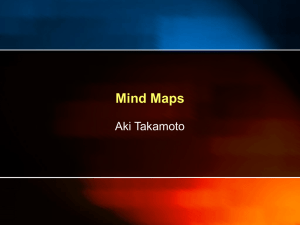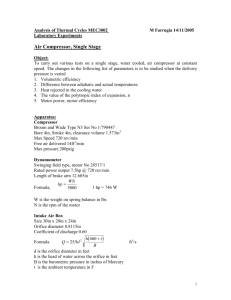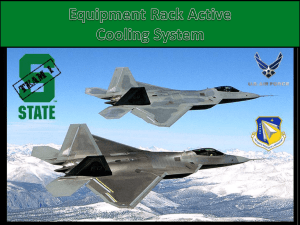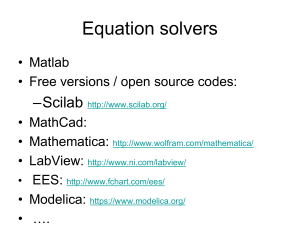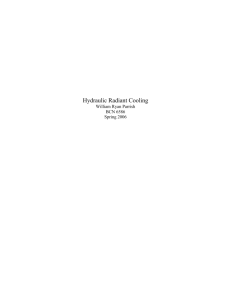ECOHEAT training
advertisement
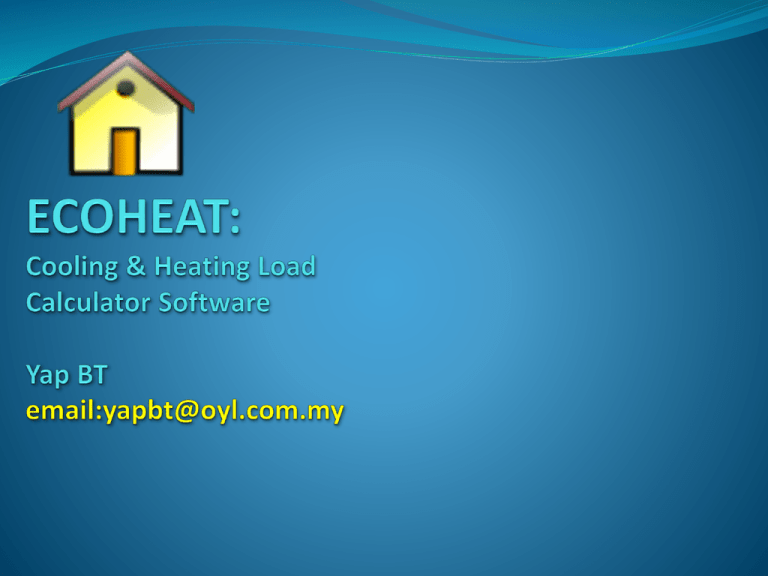
Content Introduction RTS Concept / Theory Demonstration Introduction What is ECOHEAT? A software which could be used to calculate/estimate the Cooling & Heating Load needed for a particular space. Main usage is to assist the designer in sizing the indoor units. Developed based on the most recent ASHRAE handbook. Available Methods Transfer Function Method Involves many calculation steps. More oriented to average hourly cooling load than peak design load. Total Equivalent Temperature Differential (TETD) method Needs a lot of user judgment (e.g. time averaging period) primary usefulness has always been to the experienced engineer. Cooling Load Temperature Differential (CLTD) method Single step technique that proceeded directly from raw data to cooling load without intermediate conversion of radiant heat gain to cooling load. Factors such as CLTD, cooling load factor (CLF) are limited to specific building types and conditions-> invalid beyond the range of applicability. Available Methods 1996 –ASHRAE Load Calculations Technical Committee funds RP-875; goal is to replace existing methods with: Heat Balance Method (most fundamental method) Radiant Time Series Method (simplified method, intended to be derived directly from HBM, but be much easier to use; a “spreadsheet method”) 2001 –HBM and Radiant Time Series (RTS) Method are published in ASHRAE Handbook of Fundamentals. The primary benefit of HB and RTS calculations is their somewhat reduced dependency on purely subjective input in conventional methods: determining a proper time-averaging period for TETD/TA; Ascertaining appropriate safety factors to add to the rounded-off TFM results; determining whether CLTD/CLF factors are applicable to a specific unique application. RTS Concept / Theory What Radiant Time Series does?? Used to convert the radiant portion of heat gain to cooling load. (by a series of coefficients dependent on building type) Radiant Time Series Method Internal Heat Gain Residential Calculation: utilises correlation to get the total heating/cooling load. Function of number of people, floor area. Internal Heat Gain Non-Residential Calculation: treat the internal heat gain individually More EXACT !!! Consists of peoples, lighting, PCs, monitors. It is general, can be used for residential applications as well. Surface Elements Wall/Door/Window Exterior : Wall/Door/Window exposed to direct sunlight. Wall/Door/Window Interior : Wall/Door/Window NOT exposed to direct sunlight. Floor: On-Grade: Attached to earth (adiabatic for cooling load, no infiltration) Below Grade: Attached to underground (adiabatic for cooling load, no infiltration) Above Grade: Floor above earth level (infiltration happens, heat transfer occurs) Building Types Demonstration Floor plan of a typical bedroom Thank You…






